Lipót Strelisky (1820–1905) was one of the best-known photographers in Budapest in the 19th century, who according to one of the remaining writings about him got interested in photography in 1840, and made his first daugerreotypes - with the method invented by Louis Daguerre and Joseph Nicéphore - in 1843. Strelisky's teacher was probably a French daguerreotype specialist from Paris working in Pest.
He opened his first studio in 1846 in the house at today's 3 Október 6. Street. (then 3 Két sas Street - 1 Bálvány Street) in the 5th District. Der Schmetterling supplementary theatrical and literary magazine reported the opening of his studio in an ad, and it also specified that the equipment of the studio consisted of the most modern equipment of the age and came from Paris. The house that accommodated the studio was designed by József Hild. The sales premises of the Iparműtár [crafts store] were located on the ground floor, the studio was on the third floor.
.png)
Lipót Strelisky opened his first photorgraphy studio at 3 Október 6. Street (Photo: googlemaps.com)
Lipót Strelisky exhibited his first daguerreotypes in 1846 at the exhibition of the Pest Association. Here, from 1840, contemporary art was given the opportunity to exhibit, and with the appearance of Strelisky, daguerreotype was now included in the multitude of art materials. The photographer’s career was also supported by the fact that the well-known actress of theatrical life of the age, Charlotte Wolter, and one of the greatest actors, Adolf von Sonnenthal, lived in the house on Október 6. Street. They were both members of the German Theatre on Gyapjú Street. Lipót Strelisky was soon known for his artist portraits.
Researchers have long believed that the only daguerreotype of Sándor Petőfi is the work of Lipót Strelisky. Today, however, the more accepted belief is that the poet's friend, the actor and amateur photographer Gábor Egressy (brother of Béni Egressy), photographed the poet. What is certain, however, is that after August 1849, the photographer made medallions with the portrait of Petőfi and sold them on the street, advertising civil resistance. According to contemporary records, he was therefore taken to the Újépület, Neuegeb ä ude, and interrogated for days.
.png)
Strelisky created the Görgey daguerreotype in 1849 (Source: György Kreilisheim: Régi magyar fényképezés.[Old Hungarian Photography] 1941. Officina Nyomda és Kiadóvállalat)
The Strelisky family still had a story about the Petőfi daguerreotype. “ My father told us many times that he photographed Petőfi in forty-eight, and this was the first shot he had taken on a skin negative that was in vogue at the time and had not yet been tried out in Hungary. The old man said that on 15 March 1848, he was coming home from the Múzeum Boulevard meeting to the studio in the closed glass corridor of the house at 1 Bálvány Street, […] when he saw an army of students in front of the house carrying Petőfi on their shoulders cheering and singing. He asked what they wanted, and they were told that they were looking for a photographer, and demanded that Strelisky photograph the poet immediately in memory of today. My father, who himself heard Petőfi's speech with feverish enthusiasm, happily put his arm around the poet and the whole company went up to the fényírda [photography studio] as it was called at the time. The recording went well, and I know that my father took it to Petőfi himself a few days later, ” Strelisky's son, Sándor, recalled later.
This story is certainly a family legend. What we can certainly know about Strelisky in connection with the revolution and the war of independence is also a portrait of Görgey and a recording of contemporary lithography in Eger about the opening of the first National Assembly in the Vigadó in Pest on 5 July 1848.
Lipót Strelisky was one of the first to open his studio with overhead lighting in 1861, on the top floor of the house at 11 Dorottya Street. The house, which was originally two-storey, was designed by Mihály Pollack in 1822 commisioned by Lipót Kardetter. The original classicist cassette vaulted gate and ornamental well can still be seen today. Only later, in 1885, was a third floor built on it.
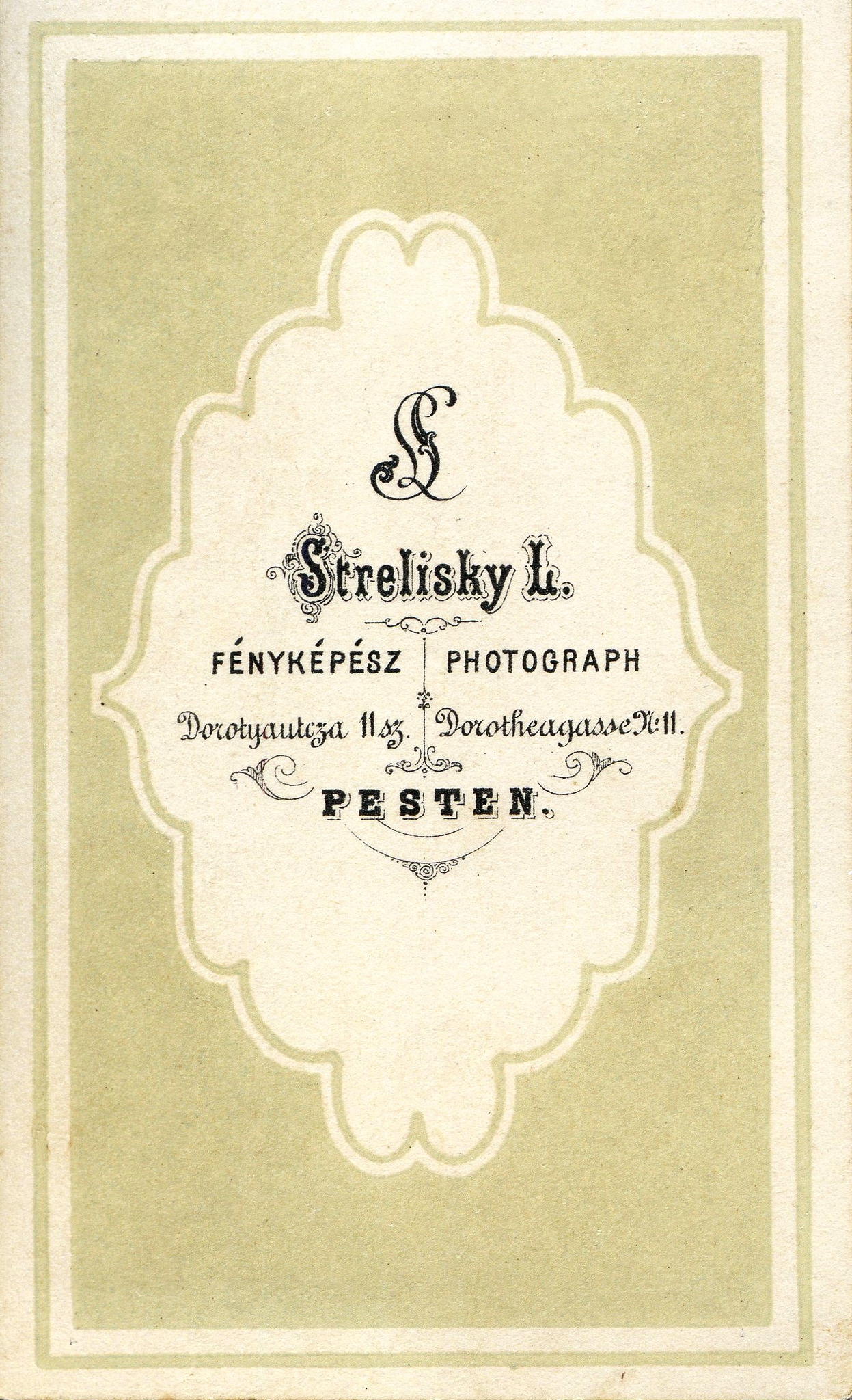
Poster for the studio at Dorottya Street 11 (Source: Fortepan / No. 90380)
In an article on 29 October 1865, the Vasárnapi Ujság praised the photographer, who had now taken colour shots as follows: "No one has yet mastered Strelisky's process by which colours show unspeakable softness and vividness."
“This genre of photography, although imitated by many, is not done as perfectly as by our fellow countryman, who has contributed much to the reputation of Hungarian photographers […] These photographs are unmatched because of their loyalty, artistic perception, and gentle, warm colours as one can see for themselves in front of the rich shop window on Dorottya Street. This genre of colouring has a special touch, which is Mr. Strelisky's secret, ” the Fővárosi Lapok wrote on 15 October 1865.
Lipót Strelisky also returned home with medals from the 1867 World's Fair in Paris and an 1871 exhibiton in London. He won the title of imperial and Hungarian royal court photographer. All of this recognition was due to his meticulous work, great skill, and dedication. In the fall of 1878, the Strelisky family moved into the house at 9 Dorottya Street, next to his former studio, and their residence and studio were set up here.
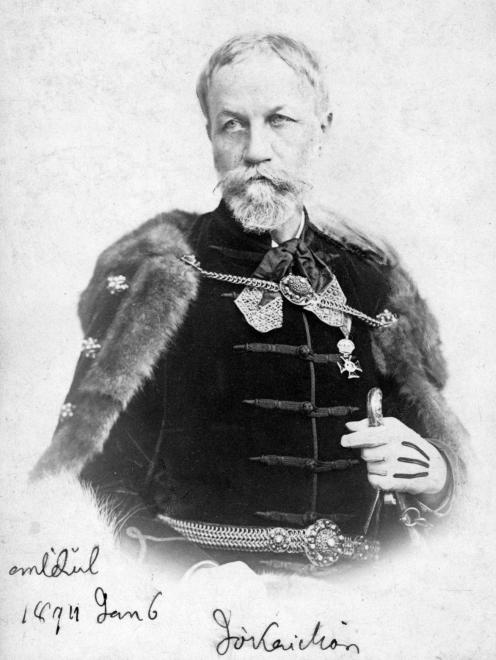
Mór Jókai's famous photo was taken by Sándor Strelisky (Source: oszk.hu)
Sándor Strelisky, the son of Lipót Strelisky, learned the craft by the side of his father. The recordings made in 1880 no longer include a first name, only the last name of the family. In 1890, at the Budapest Commercial and Exchange Court, the photography company was now registered in the name of Sándor Sterlisky, and by this time he can be found at the head of his father's Dorottya Street studio.
The exclusive photographic rights of the Millennium Exhibition were granted to eight professional representatives, so Károly Divald Jr., István Goszleth, György Klösz, the descendants of Károly Koller (Román Forché and István Gálfy), Mertens and Co., Manó Mai and Szigeti, Sándor Strelisky, Antal Weinwurm. Sándor Strelisky was still working with his father at the exhibition.

Franz Joseph and Elisabeth during the millennium (Source: Hungarian National Museum Historical Photo Gallery, photograph by K. Koller and Strelisky, no. 62.1402, 56.1933)
The Vasárnapi Ujság regularly published photos of the millennium events by the Strelisky studio. Sándor had a significant role in making group photos. In his studio, he photographed each character separately in a pre-choreographed position, and then assembled the multi-figure image from these individual shots.
At that time, it was not possible to take real ball shots just because of the lack of lighting. The 1897 photo entitled Udvari Bál [Court Ball] is also the result of a montage. The artist placed the characters photographed one by one in a recording of the ceremonial hall of the Buda Castle.
.jpg)
Each character in the Court Ball was photographed separately and then assembled by the photographer (Photo: Sándor Strelisky / Vasárnapi Ujság, 3 January 1897).
In the foreground of the picture is Archduke Frederick of Habsburg in uniform, surrounded by members of the royal family, behind whom are politicians, high-ranking ladies and gentlemen. The figure of Mór Jókai can be clearly recognized on the left.
Another significant work by Sándor Strelisky is a photo from 1903 taken for the 50th anniversary of the Philharmonic Society. The company was founded in 1853, and the photo was ordered in its Memorial Book.
.png)
Orchestra of the Budapest Philharmonic Society, 1903 (Photo: Sándor Strelisky / Hungarian National Museum Historical Photo Gallery)
The house at 9 Dorottya Street was demolished in 1910 because it became life-threatening due to its statics, and a new one was soon built in its place. At the time of the move, Sándor Strelisky opened a new studio at 7–9 Vörösmarty Square (then Gizella Square), on the top floor of Gerbeaud House. His father, Lipót, has already deceased at this time.
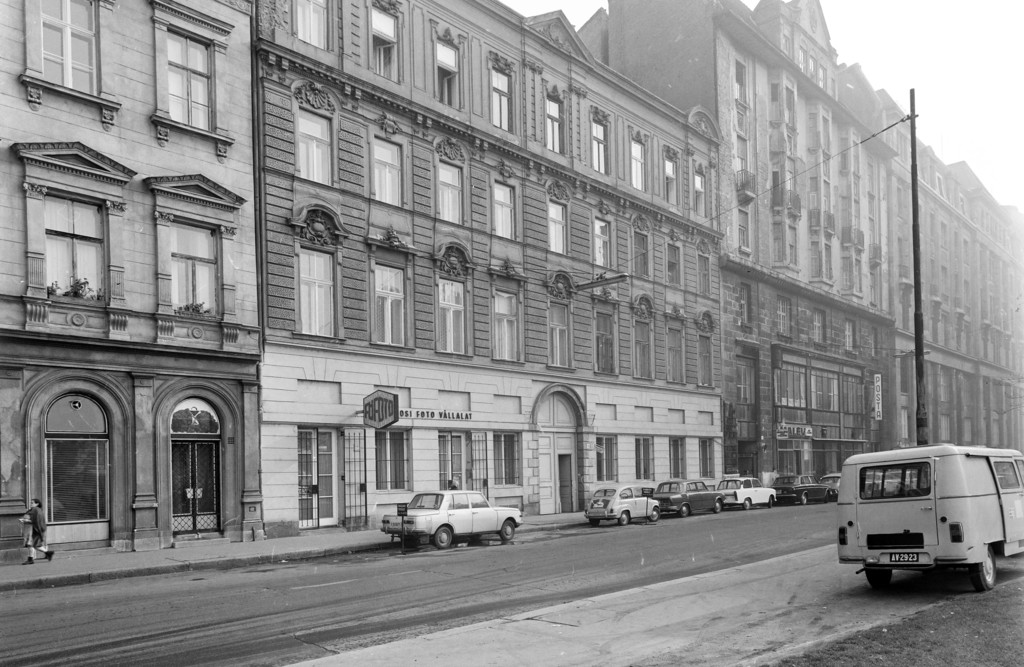
House at 11 Dorottya Street, and 9 on the left in 1975
In 1859, József Hild designed his classicist tenement house on the site of the Thirtieth Office building. When the studio moved in, the Gerbeaud confectionery was already operating here, as Henrik Kugler moved his confectionery back in 1870 and then handed over its management to Emil Gerbeaud in 1884.

Vörösmarty (Gizella) Square, the Gerbeaud House in 1900 (Photo: FSZEK Budapest Collection)
The elegant studio had a fountain, a swimming pool, several sculptures, a conservatory and a terrace where he took winter shots. There were also developing rooms, copy and retouching rooms of course. There was a glass studio, a large studio, and a bright room for interior pictures. If he was photographing actors, the scenery was delivered to the glass studio, and the costumed scenes and stage images were set by the director. Much of the early theatrical footage known today is recorded by the Strelisky photo studio.
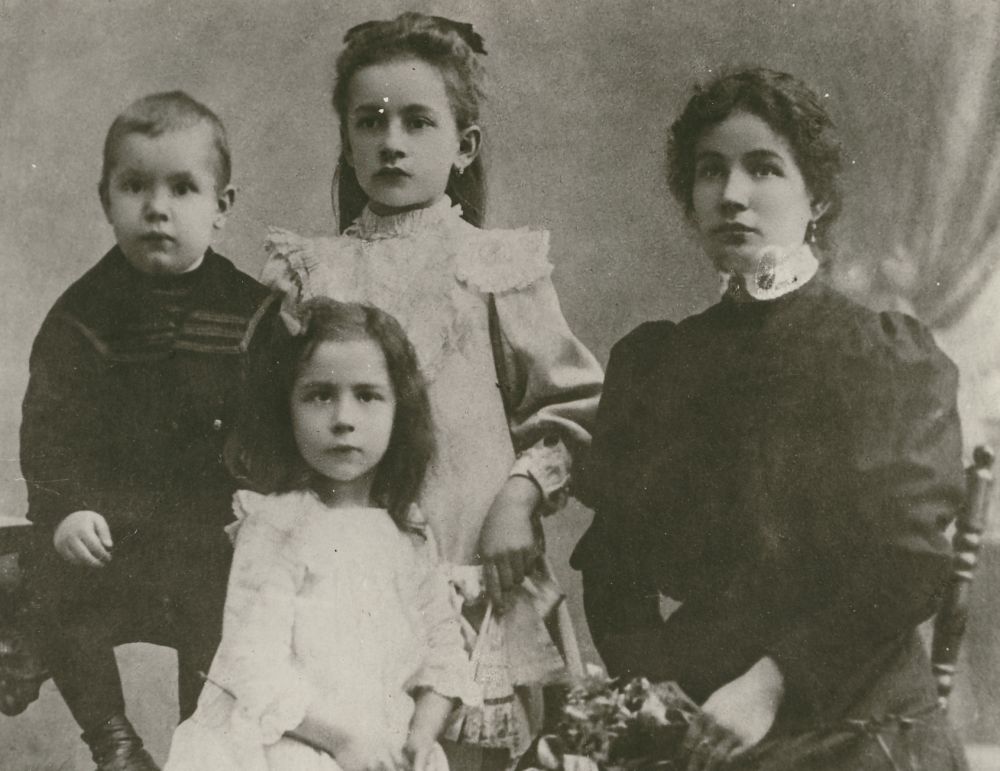
Attila József's mother also visited the studio with her children. The picture was taken in 1908 (Source: OSZK. Manuscript archive. Reference: Portrait 1242)
Sándor Strelisky had a large number of clients throughout, and he ran his own studio until his death in 1922. Under the direction of his widow the company survived until 1940 and then ceased to exist.
Cover Photo: Evening at the Park Club. Mounted group photo (Source: Vasárnapi Ujság, 1900)

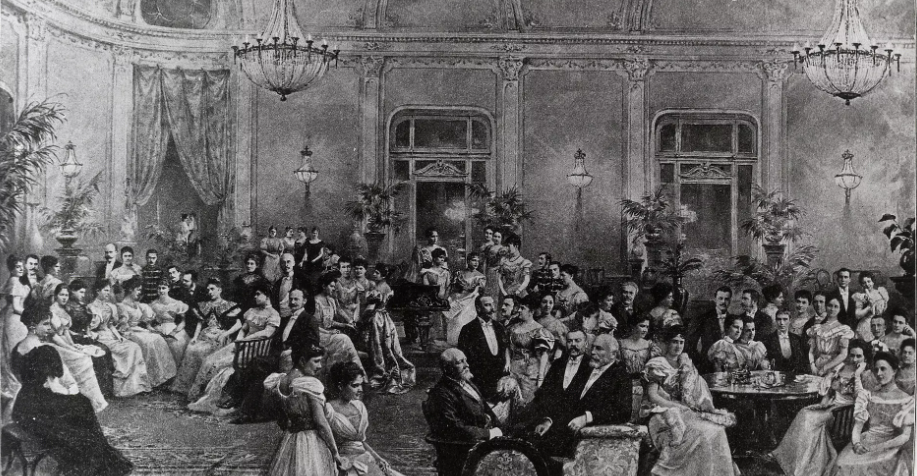

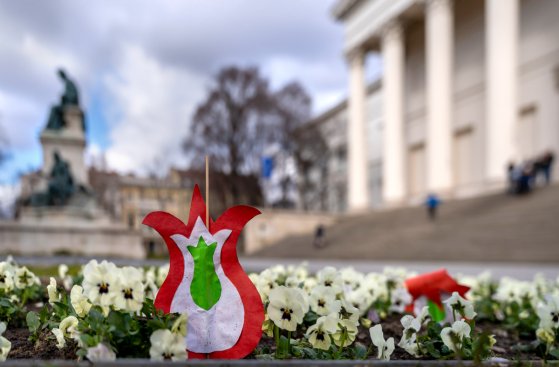

































Hozzászólások
Log in or register to comment!
Login Registration